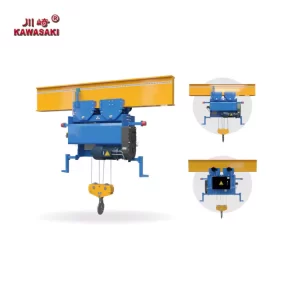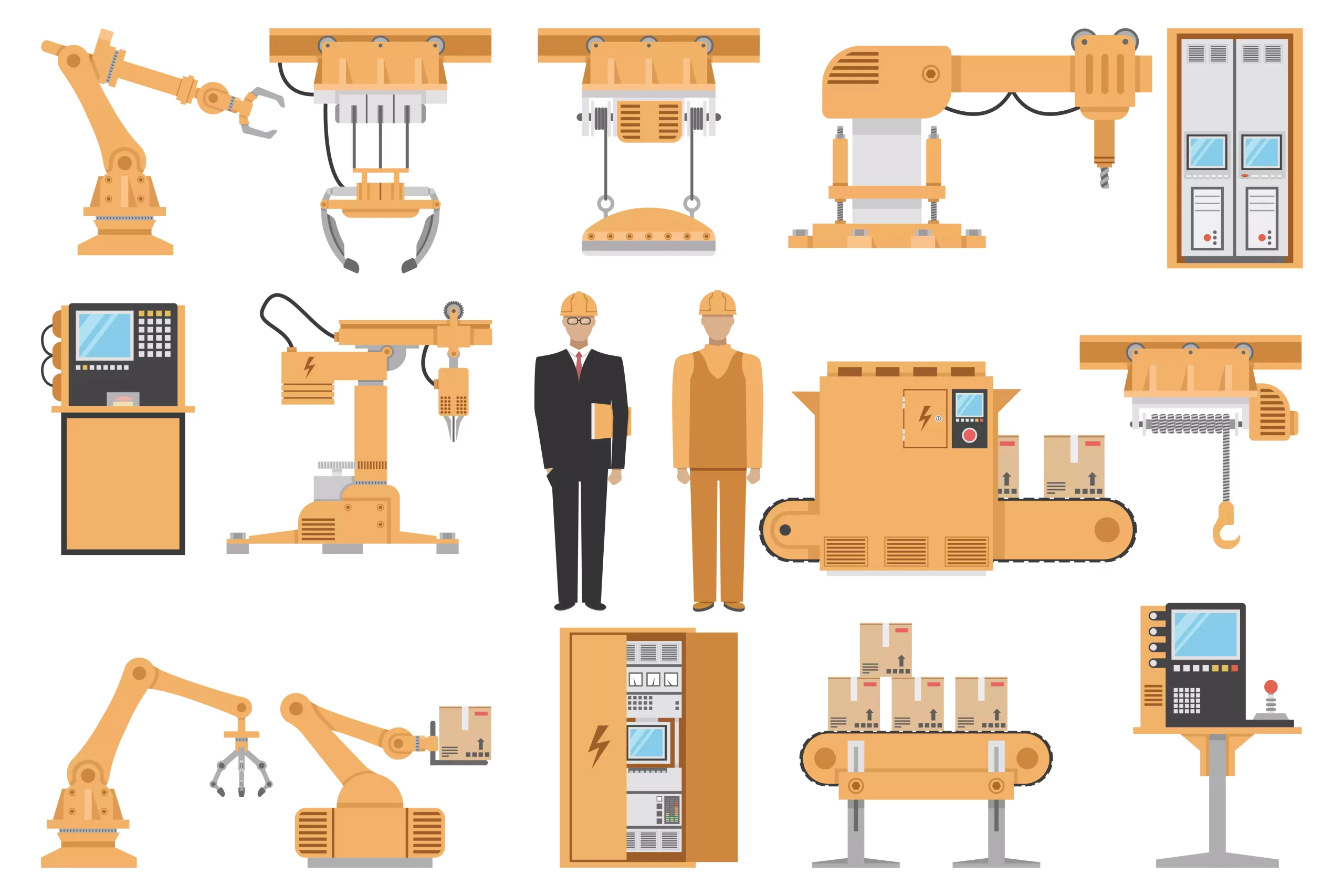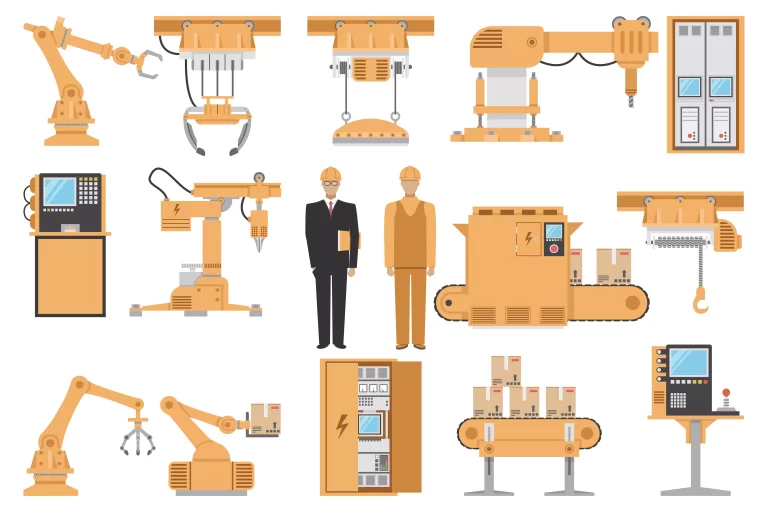Electric hoists and EOT cranes play roles in the lifting and material handling sector. Electric hoists are tools powered by electricity that excel at accurate lifting in tight areas. On the contrary, EOT cranes are built for heavy-duty lifting across distances within industrial settings. When deciding between the two options, factors like project needs, space limitations, weight capacities and financial constraints should all be carefully considered.
Do You Know Electric Hoists and EOT Crane?
Definition and Functionality
In the lifting and material handling sector electric hoists and EOT cranes play a role as key equipment pieces. A device, like a hoist is employed to raise or lower loads by utilizing a drum or lift wheel with rope or chain winding around it. Powered by electricity it offers efficiency and simple operation. An EOT (Electric Overhead Traveling) crane is a crane that runs on a track within a factory or warehouse and can transport heavy loads over significant distances.
Applications and Use Cases
Electric hoists are commonly employed in situations that demand the lifting and lowering of objects with finesse and accuracy necessary for diverse applications in confined spaces owing to their compact nature and flexibility in managing different load capacities specific to each model type; conversely, EOT cranes see frequent use in extensive industrial settings where robust lifting capabilities are essential for heavy-duty tasks prevalent in sectors like manufacturing facilities, warehouses, shipyards, and the like.
Technical Differences Between Electric Hoists and EOT Cranes
Design and Structure
Electric hoists are usually designed to be compact for use in tight spaces. They can be installed on points or connected to carts for moving horizontally along beams. EOT cranes have an intricate design featuring a bridge extending across the facility’s width and supported by rail-moving end trucks.
Load Capacity and Range
Electric hoists come with varying load capacities, typically ranging from small to medium loads. They are designed for precision work rather than bulk handling. EOT cranes, however, are built to handle much larger loads due to their robust construction and extensive range capabilities.
Factors to Consider When Choosing Between Electric Hoists and EOT Cranes
Project Requirements and Specifications
When choosing between a hoist and an EOT crane for your project needs, it’s essential to consider the unique demands of your project. Electric hoists are ideal for tasks that demand precise lifting in confined spaces. They provide efficient performance due to their motor-driven fast-lifting capabilities. On the other hand, if your project involves moving heavy loads across extensive distances within an industrial environment, opting for an EOT crane would be more suitable.
Cost Implications and Budgeting
When deciding between these two choices, budget is a factor to consider. Electric hoists are usually more economical because of their construction and lower installation expenses when compared to EOT cranes. However, if your work requires heavy lifting across large spaces opt for an EOT crane as it may provide greater overall value in the long run despite the higher upfront expenses.
Discover information about electric hoists available at APOLLO; they are well known for offering top-notch products designed to cater to a wide range of industrial requirements.
Integrating the tools into your workflow can greatly boost efficiency and maintain safety protocols at the same time. The choice between using a hoist or an EOT crane mainly hinges on the specific needs of your operations having enough space available, the necessary load capacities, and your financial constraints. With a wealth of experience dating back to its establishment in 1986 by HSY International Group in Kaohsiung, Taiwan—highlighted detail from their knowledge base—APOLLO remains at the forefront by offering tailored and innovative solutions that cater to each requirement effectively.
Advantages of Using Apollo’s Products in Your Project
Benefits of Apollo’s Electric Hoists
APOLLO’s electric hoists are crafted to provide efficiency and dependability across a range of lifting scenarios. These tools are compact in design and perfect for use in tight spaces. They run off electricity for efficiency and user-friendly operation. Their electric hoists come with safety functions like overload protection and automatic limit switches for improved operational safety. Moreover, they offer customization choices such as explosion resistance capability and dust protection along with conversion features to help you adjust the equipment according to the requirements of your particular project needs. Apollo demonstrates their dedication to excellence through their thorough testing procedures. All Kawasaki brand lifting machinery must undergo stringent testing procedures before being shipped out from the factory to guarantee that every unit meets the demanding criteria for performance and longevity.

Making the Decision: Which is Suitable for Your Specific Project?
Analyzing Project Constraints
When deciding between using a hoist or an EOT crane for your project, considering various factors like available space and load capacity requirements in the working environment setting is essential. Electric hoists are ideal for projects where precise lifting is needed in spaces because of their compact size and effective performance. They can be installed at fixed locations, connected to trolleys, for moving horizontally along beams. On the other side, EOT cranes are ideal for tasks that require lifting heavy loads across expansive spaces, within industrial environments that demand strong build quality and extensive reach capabilities.
Long-term Performance Expectations
When deciding between hoists and EOT cranes for long-term performance, considerations are important factors to consider. Electric hoists are known for their efficiency in completing tasks with the help of motors that enable fast lifting speeds, making them suitable for projects requiring precise and frequent lifting activities over extended periods. They also prioritize safety with features such as stop functions and overload protection mechanisms. EOT cranes excel in environments that demand continuous heavy-duty operations across large areas due to their robust build and capacity to handle hefty loads effectively.
Discover information on Apollo’s electric hoists, offering customized solutions to meet a variety of industrial requirements, emphasizing quality and ingenuity.
By assessing the requirements of your project and considering the advantages provided by the various Apollo equipment options, which have been well-regarded since being established in 1986 by HSY International Group, you can make a knowledgeable choice that boosts efficiency and maintains adherence to safety regulations.


